Expert’s Rating
Pros
- Exceptional hardware
- Slim and lightweight design
- Stunning cameras
- Novel software features
Cons
- No Google services
- Some bloatware to deal with
- Very expensive
Our Verdict
The Huawei Mate X6 boasts some of the most impressive hardware of any foldable phone to date, and the cameras are among the best too. It’s a really impressive showing, but the lack of support for Google services, as well as a pretty lofty price tag, mean that most people should give this one a miss.
Price When Reviewed
This value will show the geolocated pricing text for product undefined
Best Pricing Today
Peak foldable season may be over but Huawei has joined the action with a late contender, the Mate X6. Announced at the end of 2024 and landing with customers in early 2025, the Mate X6 aims to be a flagship foldable without the usual compromises.
This means it has a spacious outer display, a slim, lightweight and durable design, a big battery and flagship-level cameras. However, despite Huawei’s claims, it’s no secret that the brand’s phones do, in fact, come with compromises.
You won’t find Google services here, and it runs on silicon that’s a few steps behind the latest from Qualcomm and MediaTek. When you combine that with premium pricing, is this foldable actually worth considering?
I was keen to find out what it’s like to live with, and after inserting my SIM card for the past week or so, here’s everything I learned about the Huawei Mate X6.
Design & Build
- Vegan leather or composite fibre back
- 239g, 2nd Gen Kunlun Glass
- IPX8 rated
Removing the device from the box, the Huawei Mate X6 makes an immediate impression. It feels exceptionally well built and premium, with a luxurious faux leather back panel and shiny accents that make me think of a high-end handbag.
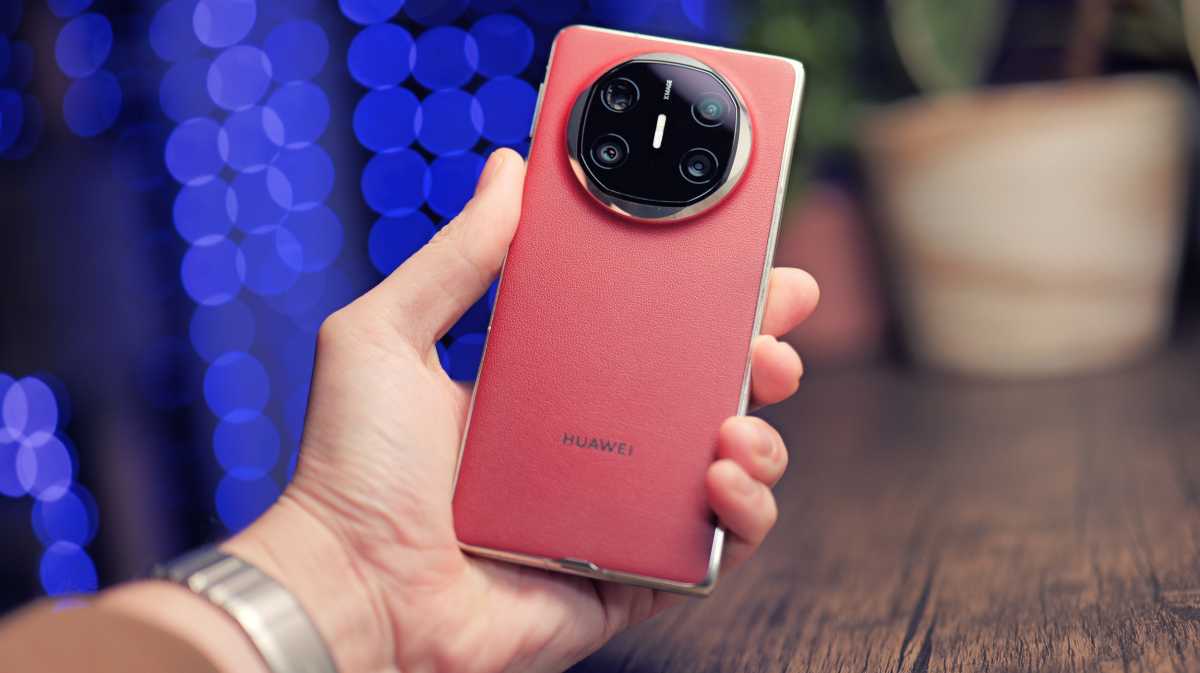
Luke Baker
I’m not usually a fan of shiny side rails. They might look nice in a showroom, but they typically pick up smudges and fingerprints like crazy, completely ruining the look. Somehow, though, that’s not the case here. Huawei has worked some magic, and these rails are almost completely immune.
The phone feels dense and solid in the hand without being too heavy. It’s a very slim phone, only marginally thicker than the razor-thin Honor Magic V3, but that extra thickness is confidence-inspiring, and this device feels like it could take more of a beating.
you could almost mistake it for a typical candy bar design if you’re not looking closely – the only difference is that it’s a little thicker.
The dimensions mean that the phone feels very natural to use folded-shut, it’s a world apart from Samsung’s oddly slim Z Fold 6. In fact, you could almost mistake it for a typical candy bar design if you’re not looking closely – the only difference is that it’s a little thicker.
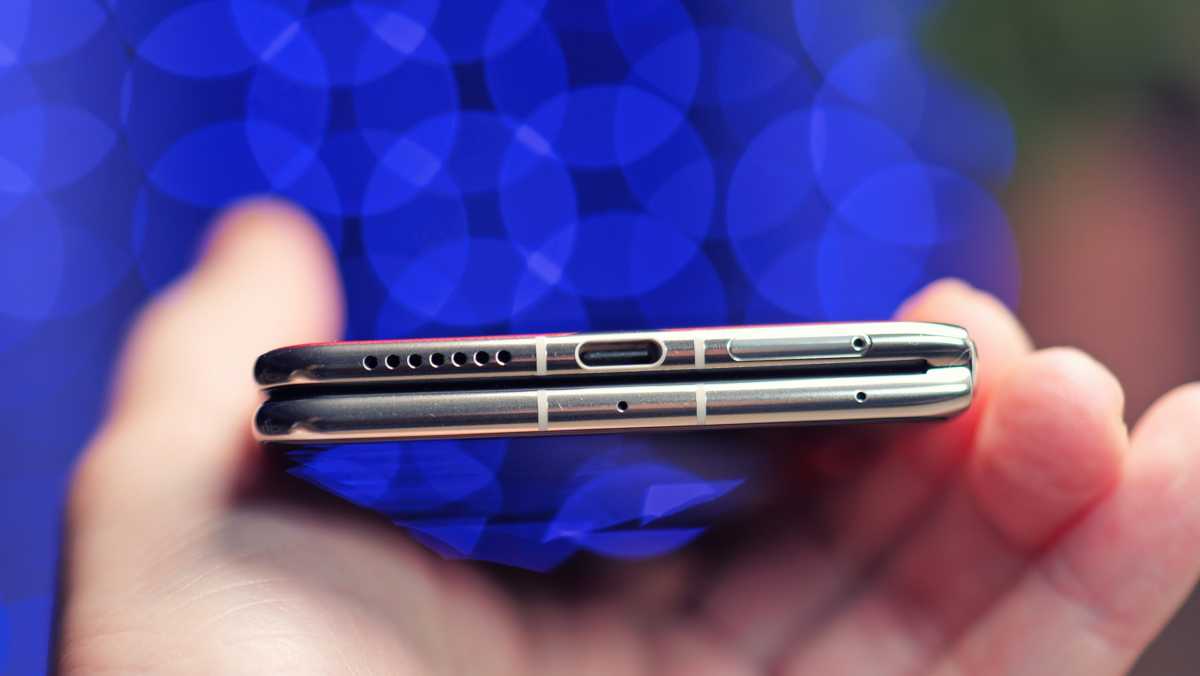
Luke Baker
The overall design is quite similar to the Huawei Mate XT, the giant dual-hinged foldable that Huawei released in China just a few months ago. And the red version that I have for testing looks especially familiar.
There’s also a version without the vegan leather backing, which comes in a grey colour with a swirly pattern across the back. It’s just as striking, and if you’re not into that leathery feel, it could be just the ticket.
It’s also worth mentioning the hinge, as I think this is likely the best implementation outside of Samsung’s efforts. Most foldable screens can happily sit at a 90-degree angle, but they have a tendency to spring open or shut at more extreme angles. Until now, I would say Samsung was the only brand to solve this issue, but Huawei has come along and matched it. It’s easily one of the best hinges on the market.
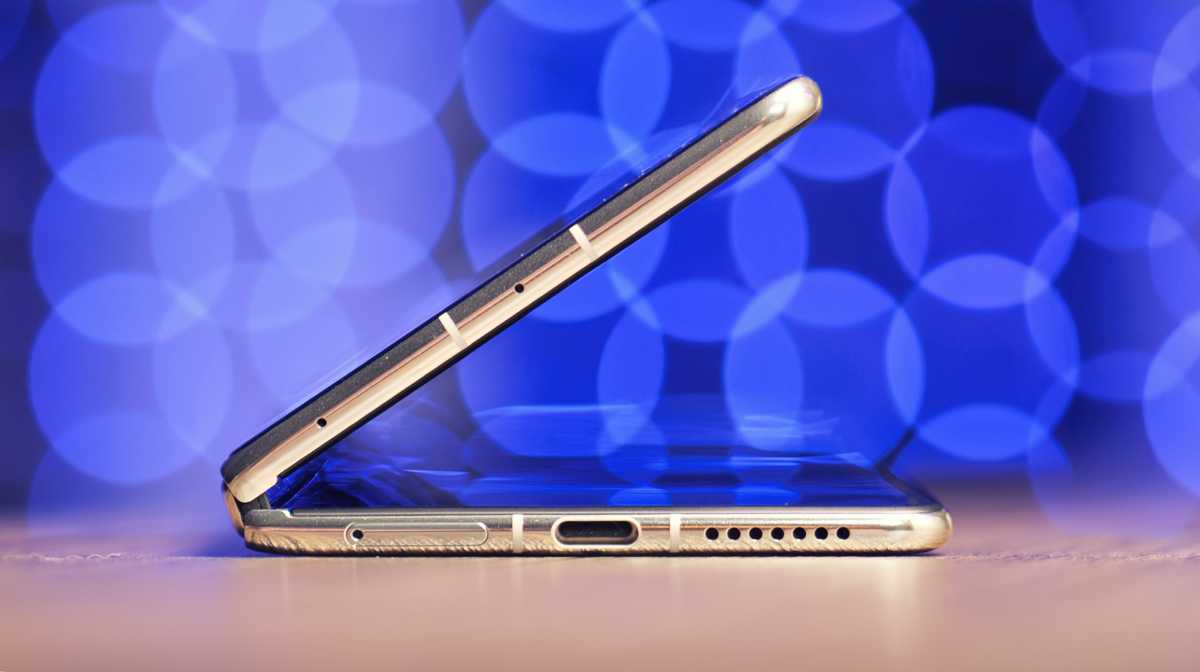
Luke Baker
The Mate X6 comes with a case included in the box, it’s made from a transparent hard acrylic material, and my model came with a colour-matched vegan leather patch on the rear. It’s a half case, so it’ll only protect the rear portion of the device, but front bumpers aren’t usually too practical on foldables, so that’s no major loss.
The case has a built-in kickstand that’s spring-loaded and makes for a good fidget toy, as well as being very practical. It can rotate 270 degrees to make for an effective stand in either landscape or portrait orientation. I always like to have a kickstand with a foldable phone, it’s nice to be able to set the phone down on a table and use it like a mini TV.
Aside from the included case, the phone also boasts IPX8 water resistance, so getting caught out in the rain shouldn’t pose an issue. There’s also a new highly scratch-resistant version of Huawei’s Kunlun glass on the outer screen. Of course, dust could still pose a threat, and that inner screen will need to be handled with care.
Screen & Speakers
- Outer: 6.45-inch 1080 x 2440 OLED 120Hz
- Inner: 7.94-inch 2240 x 2440 OLED 120Hz
- Stereo speakers
The outer screen has a quad-curved design with symmetrical bezels, as is the trend with recent Chinese flagship devices. This means the screen is mostly flat, and the curves only start around the bezel, giving you the best of both worlds.
The curve is slightly less pronounced on the hinge side, but the effect is the same. Gesture controls feel wonderfully smooth as you swipe from the edge of the display, but you don’t get the annoying accidental touches or distracting reflections that are present on traditional curved designs.
Opening it up, the inner folding display is a spacious unit just shy of 8 inches. It has an almost square aspect ratio and the selfie camera is tucked neatly in the corner.
This is my preferred configuration, centrally placed camera cutouts often interfere with full-screen content and Samsung’s under-display unit, with its low pixel density covering, is almost as distracting. This camera hole is very easy to forget about, and the only downside is that you have to angle the phone slightly to be centred in selfies and video calls.
The foldable screen protector reminds me of the one on Samsung’s Galaxy Z series phones. It’s much more glossy than the one on the Honor Magic V3, but for good reason. It feels harder, and this means your fingers glide across it with less friction, it’s also less prone to fingerprint smudges.
However, there’s a big downside to this type of screen protector, and that’s the reflections. The main issue is that the crease becomes much more noticeable in certain lighting conditions, and that’s sure to bother some users more than others. In any case, the crease is much shallower than Samsung’s, and I found it easy to forget about.
the crease is much shallower than Samsung’s, and I found it easy to forget about.
Both screens share similar specifications, they’re both LTPO OLED panels that can shift from 1-120Hz, and they have a similar pixel density. The foldable display has a higher resolution, simply because it’s larger, but the main difference is the brightness.
The outer screen can boost to 2500 nits to compete with bright sunny days, whereas the foldable screen maxes out at 1800 nits. Both have been plenty bright enough for me, but it is winter in the UK, and sun is a rarity, so take that with a grain of salt.

Luke Baker
If you’re concerned about eye health, Huawei has made some strides in this area, too. The screens have a new low light mode that can dim all the way down to 1 nit, as well as super speedy 1440Hz PWM dimming to reduce eye fatigue.
Specs & Performance
- Mystery processor (Kirin 9020?)
- 12GB RAM
- 512GB storage
As you may have gathered, Huawei’s hardware has impressed on all fronts so far, but it’s here that things get a little more complicated. US sanctions mean that Huawei doesn’t have access to the same chips as rival brands, so there’s no Qualcomm or MediaTek here, and the brand must rely on its own Kirin processors.
Huawei’s product page and marketing materials neglect to mention the processor, but other sources claim it’s the Kirin 9020. Whatever the case may be, this silicon is a good few steps behind the competition.
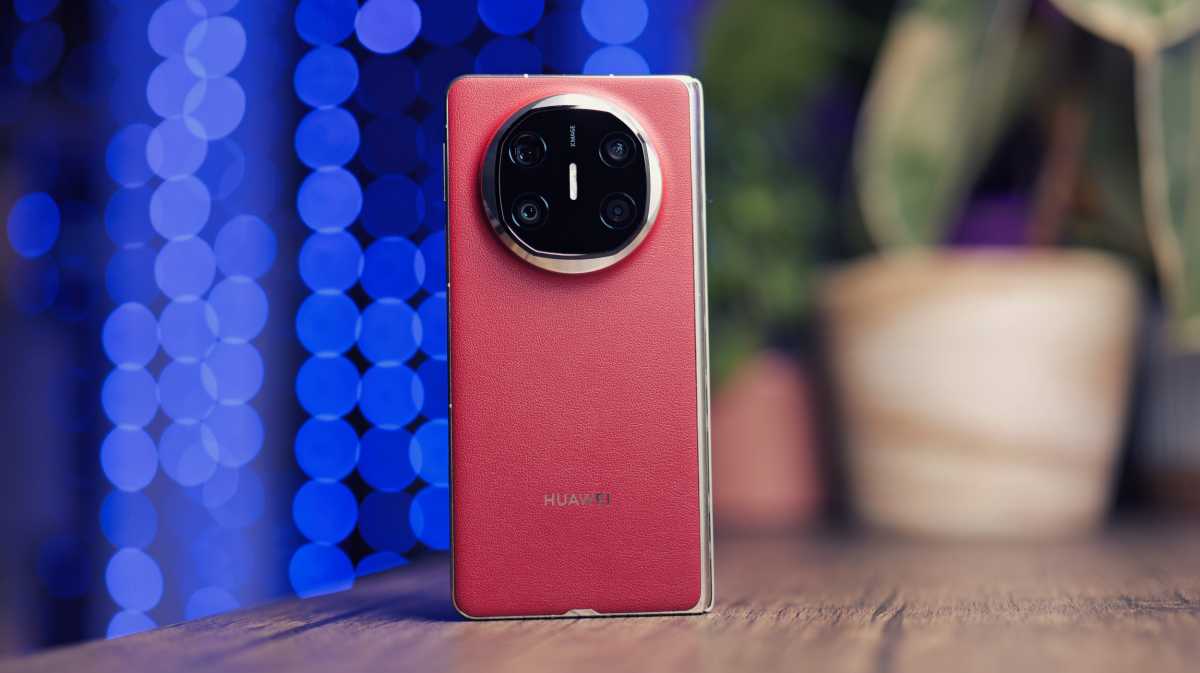
Luke Baker
Benchmark tests make the gap clear as day, it’s nowhere close to matching the raw power of the Snapdragon 8 Elite or MediaTek Dimensity 9400, and that’s not what you want to see when you’re paying such a premium price.
However, benchmarks don’t tell the full story, and with some clever software optimisation, Huawei is able to squeeze a lot of performance from this relatively sluggish chip.
It feels snappy and responsive, apps open quickly and animations are consistently slick and smooth.
In day-to-day use, it’s almost impossible to tell the difference between this phone and any other flagship device. It feels snappy and responsive, apps open quickly and animations are consistently slick and smooth.
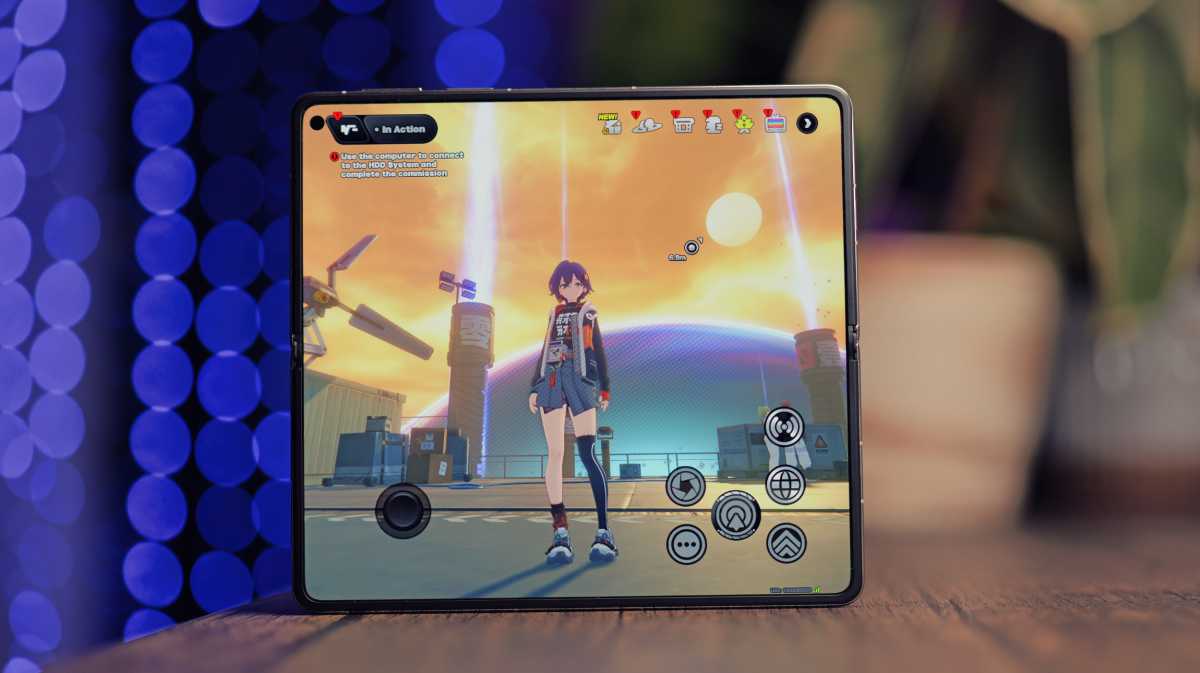
Luke Baker
It even games surprisingly well, I was surprised to find I could max out the settings in notoriously demanding titles like Genshin Impact and Zenless Zone Zero. The framerate dipped occasionally, but both remained playable, and the phone never got concerningly warm in the process. I’m not sure how Huawei has managed this, but I’m certainly not complaining.
I’m sure there are circumstances where the lack of processing power will be more apparent, maybe in editing videos or something like that, but it wasn’t something I ran into with normal usage. The main thing I noticed was that photos took a little longer to process when they first opened in the gallery, which is barely an inconvenience.
It’s also worth mentioning that the reception is excellent on this phone. I found that I had a signal in places where my other phones tend to drop out. There’s a big caveat, though, and that’s the fact that this phone doesn’t support 5G. So while your signal might be great, the maximum speed will be lower than you’re used to.
Cameras
- 50 Mp f/1.4-f/4.0 main camera
- 48 Mp f/3.0 4x telephoto (macro)
- 40 Mp, f/2.2 ultrawide
- 8 Mp, f/2.2 selfie camera, fixed focus
The Huawei Mate X6 has a triple camera setup on its rear, there’s a 50Mp main camera with a mechanically adjustable aperture, a 48Mp 4x telephoto with macro capabilities and a 40Mp ultrawide camera.
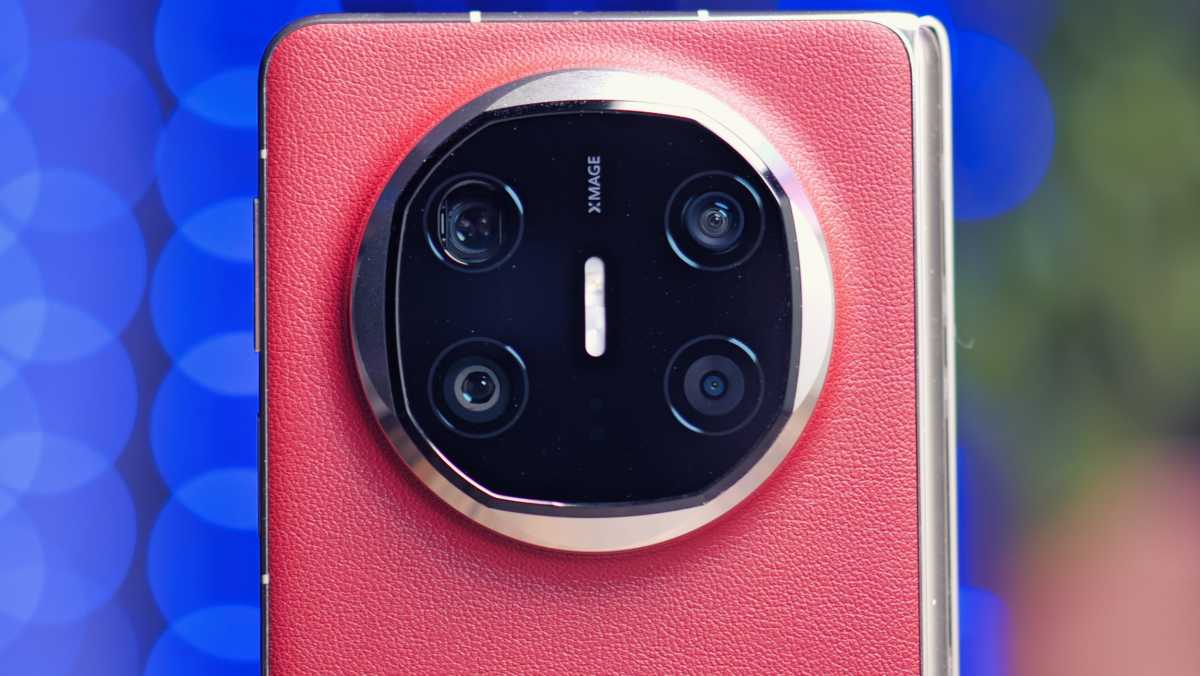
Luke Baker
Somewhat unusually, Huawei hasn’t mentioned the sensor sizes, so we’re left guessing in that department. Given the relatively slim camera bump, though, it’s safe to say we’re under the 1-inch threshold.
There’s a fourth sensor on the rear, that Huawei calls the Ultra Chroma Color Sensor. This is designed to give you the perfect white balance every time, and based on my testing so far, it seems to work as advertised.
This is the first foldable phone to arrive on the global stage with an adjustable aperture. We’ve seen similar tech on recent Honor and Huawei flagships, but it has never made its way to a foldable, other than the China-exclusive Mate XT.
Matching the Pura 70 Ultra, this aperture can shift from f/2.0 to f/4.0, and changing the value affects the amount of light let in, as well as the depth of field – just like a professional mirrorless camera. Casual users are unlikely to notice a massive difference, as the software automatically selects an appropriate F-stop, but those craving finer control over their images will enjoy this.
The main way I used this feature was for closeup shots. If you’re taking a macro shot of a plant or a miniature, it can often be difficult to get the entire subject in focus. The closer you get, the narrower the focal plane becomes, but closing that aperture a bit can yield much sharper results.
What’s slightly frustrating is that the best macro camera on this phone is the 4x telephoto, and that doesn’t have an adjustable aperture. Thankfully, Huawei has managed to overcome this issue with its software.
There’s a new feature that Huawei calls eDOF (extended depth of field) and it combines multiple shots taken at different focal points to keep the whole subject sharp. It’s the same technique that professional macro shooters use, but in this case, it’s done at the touch of a button, without the usual manual stitching process.
It can’t be overstated how impressive this 4x lens is for macro shooting. It’s basically like having a microscope in your pocket.
It can’t be overstated how impressive this 4x lens is for macro shooting. It’s basically like having a microscope in your pocket. You can get close enough to see the individual fibres on clothing, and if you love taking pictures of plants or insects, you’re in for a great time.
The ultrawide is slightly less impressive than the other two cameras, as is often the case, but it’s still very good. The colours match the other lenses perfectly and the 13mm equivalent FOV allows you to squeeze lots into the frame.
There’s a punch-hole selfie camera on both displays and each has an 8Mp resolution. These cameras are perfectly adequate, but small sensors and fixed focus mean they’re not going to amaze with their quality. If you’re looking for a show-stopping selfie, it’s well worth unfolding the phone and using the rear camera instead.
As I’ve found with previous Huawei devices, the portrait mode effects and night mode are up there with the best available. So while this phone might not boast the large sensor sizes of its bar-phone competition, it gets the job done handily in low-light conditions. It also has the same impressive motion-freezing capabilities as the Pura 70 Ultra. So if you love taking action shots, or if you have kids or pets that won’t sit still, the Mate X6 can work some magic.
Photo quality is somewhat subjective. Some people like vibrant, poppy images, while others prefer lifelike shots with a natural-looking sharpness. I’m in the latter camp, and for me, Huawei’s image processing is among the best available.
Battery Life & Charging
- 5110 mAh battery
- 66W wired charging
- 50W wireless charging
Despite being impressively slim, the Huawei Mate X6 still manages to pack in a 5110 mAh battery pack. And while it’s not the longest-lasting foldable that I’ve ever tested, the battery life is very good. I never struggled to make it to the end of the day, even with lots of camera usage and plenty of streaming on the large foldable display.
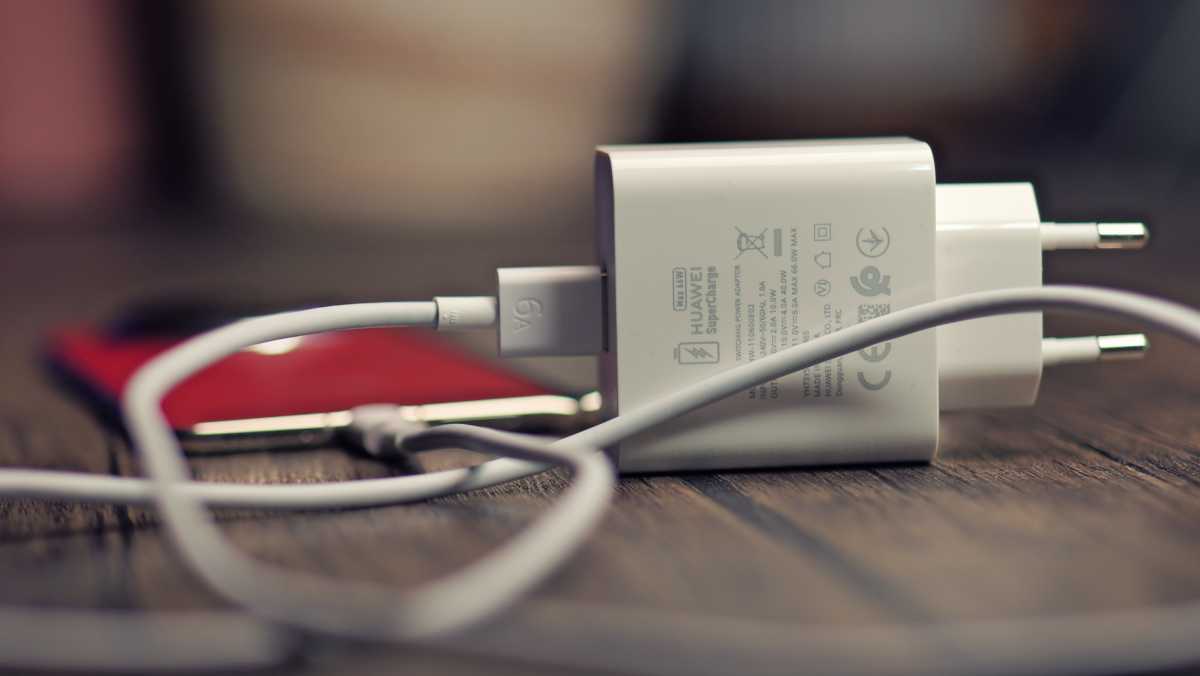
Luke Baker
It charges fairly quickly, too. Again, it’s not the fastest that I’ve tried, but 66W is enough to take you from flat to full in under 45 minutes. It’s almost as quick wirelessly, boasting an impressive 50W maximum rate. That’s faster than the S24 Ultra can charge with a wire, not too shabby!
Of course, you’ll need a specific Huawei wireless charger to achieve maximum speed, but thankfully, the wired adapter is included in the box. So you’ll get the fastest speeds from day one when you’re plugged in.
Software & Apps
- EMUI 15, based on Android
- No Google services
- New multitasking features and eye-tracking
In China, Huawei’s latest phones have moved to a new proprietary version of HarmonyOS that’s no longer based on Android, but that’s not the case with global models. The Mate X6 runs EMUI 15, which is still a heavily customised version of Android 12.
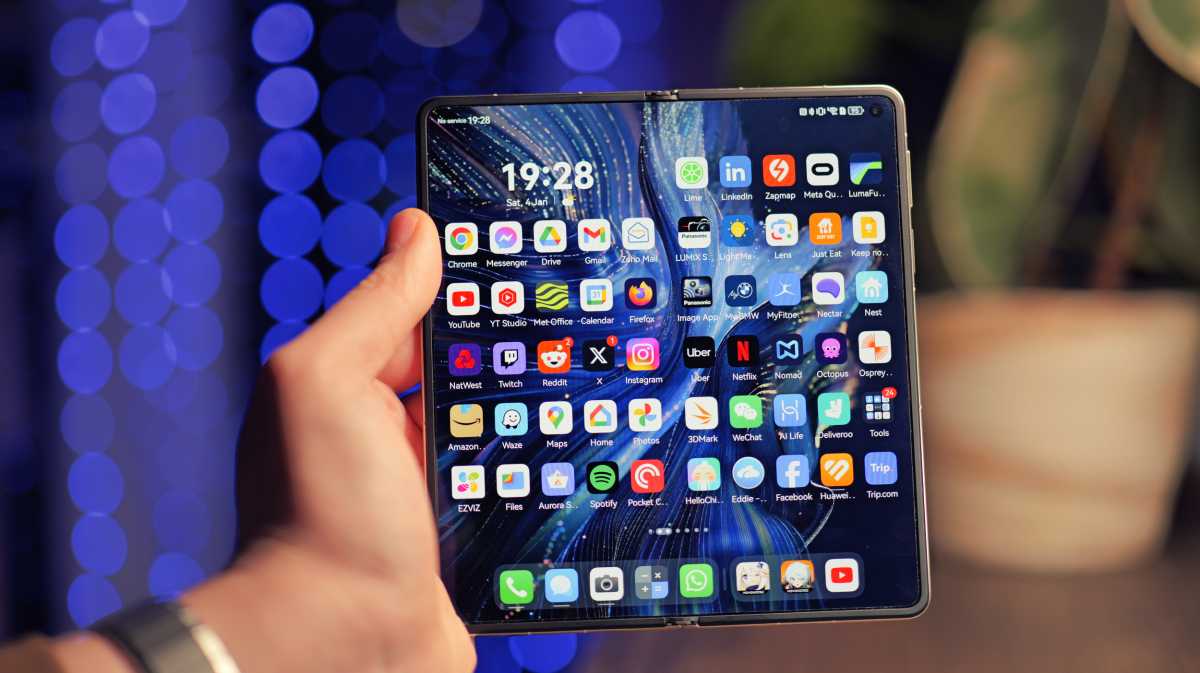
Luke Baker
However, unless you’re coming from a recent Huawei device, it’s a very different Android experience than usual. Those aforementioned sanctions mean that the phone has no access to Google services. That means no Play Store, no Gmail, no YouTube – the list goes on.
unless you’re coming from a recent Huawei device, it’s a very different Android experience than usual
There’s no way I can use a phone without these services, but thankfully, there are a few different workarounds that can get these apps installed. A combination of the MicroG Project and Aurora Store means that these apps run almost natively, and it’s my preferred method. The only functions that are missing are Google Assistant/Gemini, Google Wallet and Android Auto. Not ideal, but manageable omissions for many.
Unfortunately, it’s not entirely seamless elsewhere. I still experienced delayed and missing notifications, as well as other minor bugs, and since the affected apps aren’t officially supported, troubleshooting can be difficult.
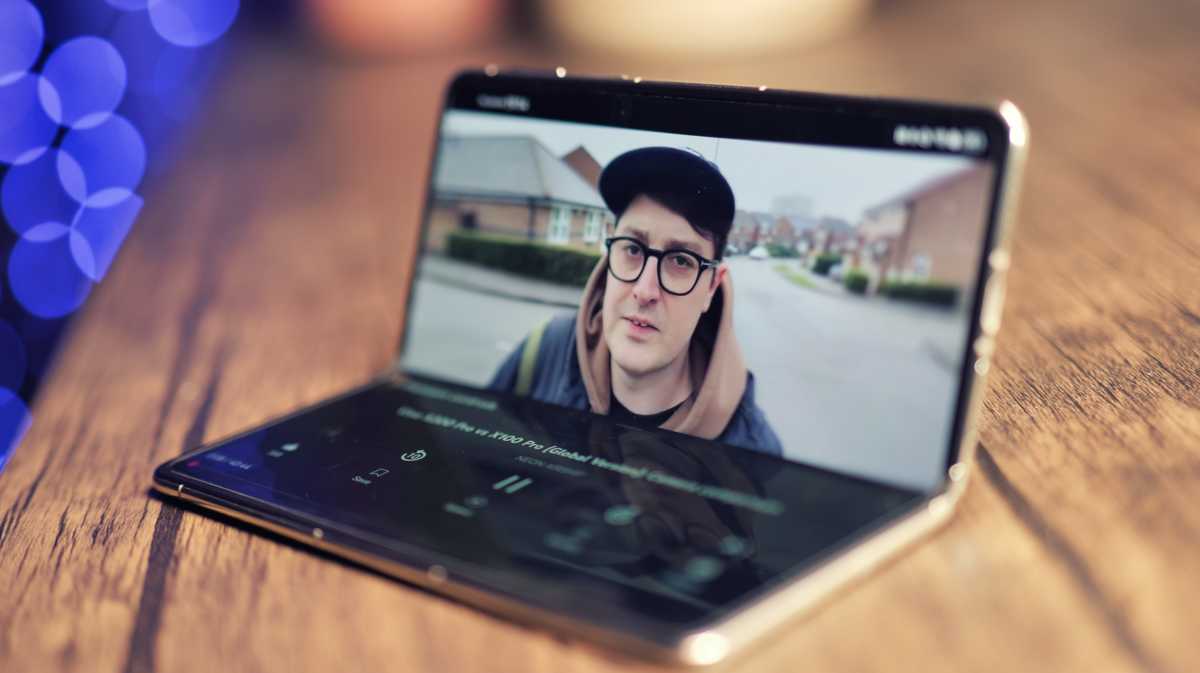
Luke Baker
Other than the lack of Google services, Huawei’s OS is quite pleasant. I’ve already mentioned the impressive speed and responsiveness in spite of lacklustre hardware, but there are plenty of other novel features included too.
The most unusual is a series of wallpaper options with eye-tracking support. There’s a mini basketball game you can play hands-free with air gestures and a couple of wallpapers that have eye-reactive animations. There’s no useful functionality to any of it, but it’s pretty cool, so I guess that’s the point.
There’s also a new stereoscopic multi-view multitasking mode, which is far more practical. This allows you to display up to 3 apps side by side and swipe through them as required. It looks very slick, but the most impressive part is that videos will keep playing even when they’re shifted off to the side, so you can keep listening as you multitask like a pro.
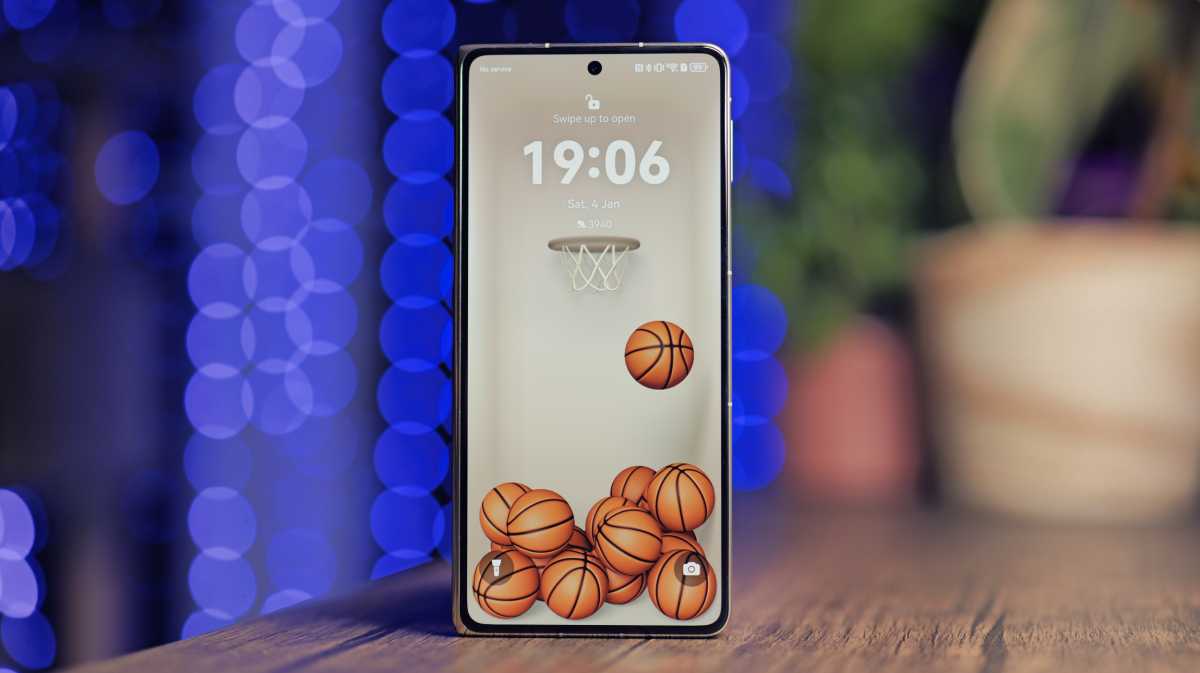
Luke Baker
If you use other Huawei products, like the new FreeBuds Pro 4, for example. The integration is impressively smooth. The OS makes it fast and easy to manage all your Huawei gear and pairing is done in a flash. Those particular earbuds support lossless audio via Huawei Sound, too. A perk currently restricted to this handset only.
One thing I found particularly irksome is that the app drawer option seems to have disappeared on the latest version of EMUI. I have my fingers crossed that it’s just a pre-release software oddity, but my Pura 70 Ultra lets me have my apps hidden away and the Mate X6 doesn’t. It makes keeping things tidy a real chore.
Price & Availability
The Huawei Mate X6 has a fairly lofty MSRP of €1,999 in Europe, and it’ll be launching imminently in select countries. The phone was listed on the local Huawei website in France, Spain and Germany, but it seems to have vanished again, at the time of writing – and there’s no sign of it in the UK just yet.
It’s one of the priciest handsets on the market right now, and considering the compromises that come with owning a Huawei phone, it’s a tough sell for all but the most die-hard Huawei fans. If you want to check out what the competition brings to the table, check out our guide to the best folding phones.
We’re still not certain if this phone will officially be sold in the UK, but if it arrives, it’s very unlikely to be available on contract. So whether you’re importing or just buying outright, be sure to take a look at our list of the best SIM-only deals.
Should you buy the Huawei Mate X6?
The Huawei Mate X6 is an amazing piece of hardware. It looks stunning, feels premium and has one of the best hinges in the business. Its cameras are impressive too, with natural colour tuning and exceptional macro capabilities.
Unfortunately, the experience is soured by the lack of Google services. Yes, there are plenty of workarounds, but they’re not flawless, and it’s a headache you don’t have to endure elsewhere.
Then, there’s the price. This phone costs as much as the impressive Honor Magic V3 and more than the Pixel 9 Pro Fold and Galaxy Z Fold 6. It’s hard to justify such a cost when you’re in for a less-than-perfect experience.
Huawei has succeeded in making one of the most impressive foldable phones available, and at times, it’s a pleasure to use. At the end of the day, though, the compromises are too large to recommend buying one.
Specs
- EMUI 15, based on Android 15
- Outer: 6.45-inch, 1080 x 2440, OLED, 120Hz
- Inner: 7.94-inch, 2240 x 2440, OLED, 120Hz
- Power-button fingerprint sensor
- Kirin 9020
- 12GB RAM
- 512GB storage
- Cameras:
- 50Mp main sensor
- 40Mp ultrawide
- 48Mp 4x telemacro
- Dual 8Mp selfie camera
- Up to 4K @ 60fps rear video
- Stereo speakers
- Dual-SIM
- Wi-Fi 802.11 a/b/g/n/ac/ax
- Bluetooth 5.2
- 5110mAh battery
- 66W wired charging
- 50W wireless charging
- 156.6 x 73.8 x 9.9 mm (folded)
- IPX8 certified
- 239g
- Colours: Nebula Red, Black, Nebula Grey








